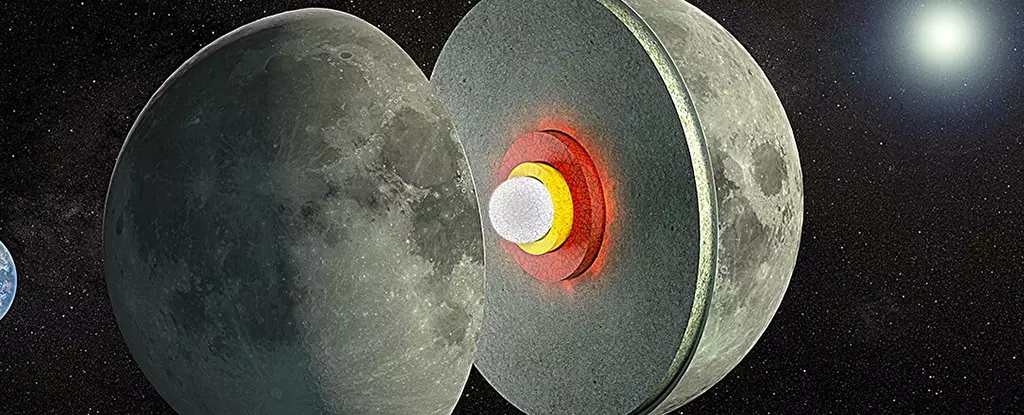For centuries, humanity has looked toward the Moon with fascination and curiosity, seeking to understand its composition and history. A recent study conducted by researchers from NASA’s Goddard Space Flight Center alongside the University of Arizona has added a compelling new chapter to this narrative. Their investigation has identified evidence supporting the existence of a partially-molten layer located between the Moon’s rocky mantle and solid metal core, reshaping our understanding of lunar geology. The implications of this finding extend beyond mere scientific curiosity; they could redefine how we view the Moon’s evolutionary processes and thermal dynamics.
Using data collected from NASA’s Gravity Recovery and Interior Laboratory (GRAIL) and the Lunar Reconnaissance Orbiter, the research team has assessed the Moon’s internal structure by examining its gravitational influence. This study highlights that the Moon is not entirely solid throughout its interior; rather, it bears a thick, viscous zone—often referred to as a low-viscosity zone (LVZ)—at the base of its mantle. The significance of this discovery lies in its potential to explain the physical deformations the Moon undergoes due to gravitational interactions with both the Earth and the Sun. These processes create tidal effects that manifest not in oceanic movements, but rather through subtle shifts in the Moon’s shape and gravitational field.
The gravitational forces exerted by Earth and the Sun lead to a unique phenomenon on the Moon. Instead of traditional oceanic tides, the lunation experiences a “solid tidal” effect, which results in the physical deformation of its structure. Through the researchers’ advanced computer modeling, they were able to simulate these effects and determine that a viscous layer must exist beneath the solid mantle to account for the observed data. This layered composition suggests a more dynamic internal structure than previously thought, indicating that the Moon has undergone significant geological changes over millennia.
The identification of the LVZ invites further questions about its origin and characteristics. The researchers speculate that this partially-molten region may be enriched with ilmenite, a titanium-iron oxide mineral. Similar processes have been noted on Mars, where seismic analysis points to partial melt beneath its surface. This parallel opens avenues for comparative studies between terrestrial bodies, allowing scientists to evaluate the Moon’s history in the context of planetary development across our solar system.
The presence of an LVZ has profound implications for theorizing the thermal state and evolutionary history of the Moon. It raises questions about how this layer remains molten despite the Moon’s age and the cooling processes it has undergone throughout billions of years. Understanding the composition and behavior of the LVZ not only sheds light on the Moon’s geological activity but also contributes to a better grasp of its potential resources and the feasibility of future lunar bases.
The Future of Lunar Exploration
Looking forward, the establishment of a human presence on the Moon may provide unprecedented opportunities for direct exploration of its interior. Seismic readings taken from the lunar surface could yield vital information regarding the LVZ and the geological processes at play. This scientific endeavor is crucial, particularly as humanity prepares for extended lunar missions and aims to create sustainable habitats on the Moon.
As scientists continue to unlock the mysteries of the Moon, studies like this one challenge our preconceived notions about its geology and evolution. The suggestion of a partially-molten layer underscores the complexity of lunar science and the ongoing need for exploration. With every advance in our understanding, we pave the way for future discoveries that may reshape our comprehension of not only the Moon but also the broader dynamics of celestial bodies within our solar system.


Leave a Reply